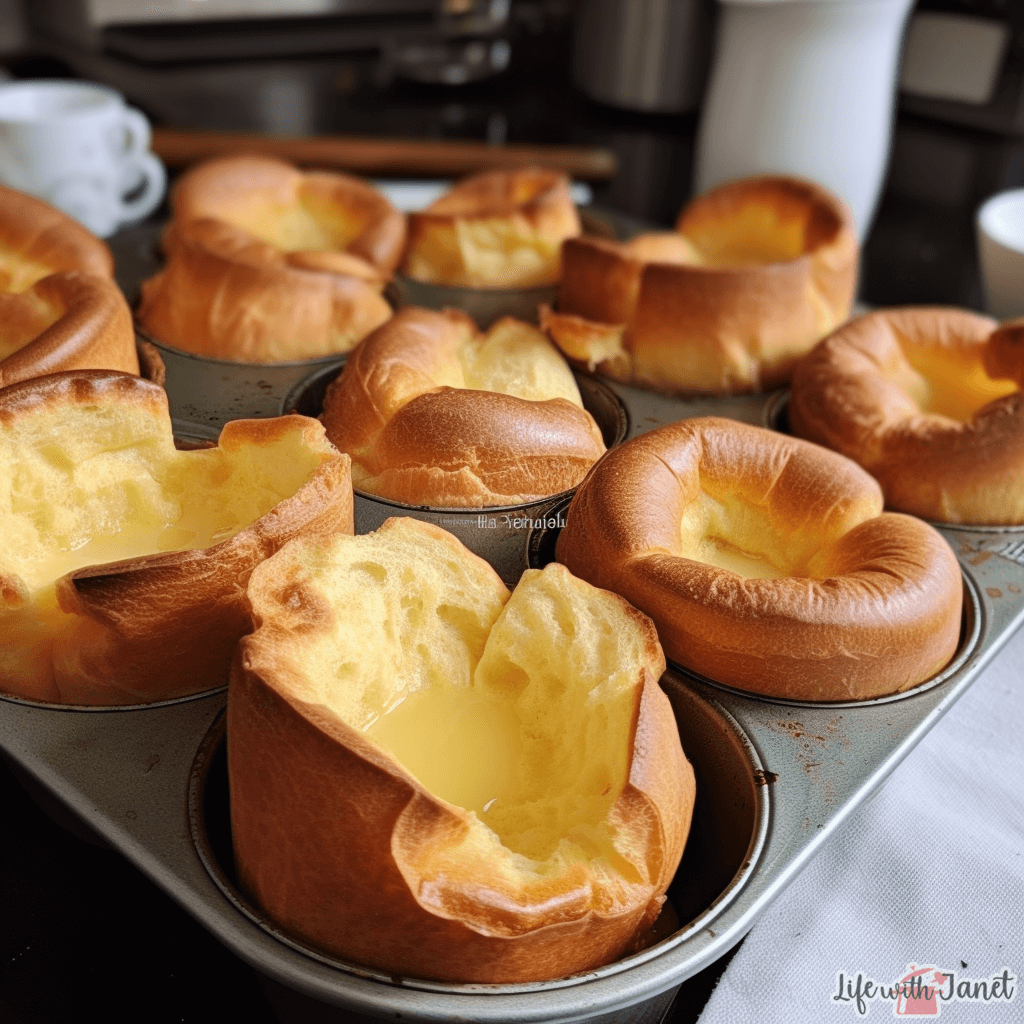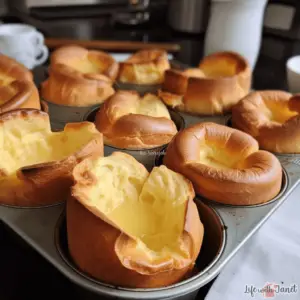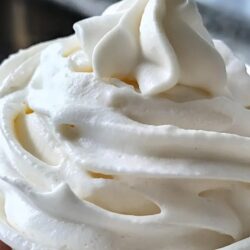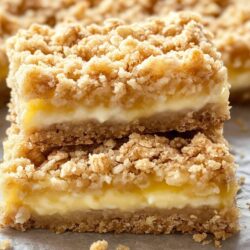WANT TO SAVE THIS RECIPE?

What is Yorkshire Pudding?
Yorkshire Pudding is a beloved British classic, traditionally served alongside roast beef. Think of it as a savory popover—crispy on the outside, tender on the inside, and perfect for soaking up all the delicious gravy from your Sunday roast.
Why You Will Love This Yorkshire Pudding Recipe
Yorkshire Pudding is the kind of dish that turns a good meal into a great one. This recipe is easy to follow and delivers perfect results every time. You’ll get those tall, crisp puddings with a delightful hollow inside, ready to be filled with gravy or just enjoyed as they are. Plus, they’re fun to make and even more fun to eat.
Ingredients in Yorkshire Pudding
- 4 large eggs: The key to a rich and fluffy pudding.
- 150g all-purpose flour: This is about 1 cup plus 2 teaspoons—provides the structure.
- 175g whole milk: About 3/4 cup—adds moisture and richness.
- 25g water: About 1 tablespoon plus 2 teaspoons—helps create a lighter texture.
- 2g kosher salt: About 1/2 teaspoon—enhances the flavor.
- 100ml beef drippings, lard, shortening, or vegetable oil: About 1/2 cup—gives that classic savory flavor.
Frequently Asked Questions
What’s the best pan to use for Yorkshire Pudding?
You can use popover tins, muffin tins, or even a large cast iron skillet. Each type will give you a slightly different shape and size, but they’ll all taste amazing.
Can I make the batter ahead of time?
Yes! Resting the batter overnight or for at least 30 minutes helps develop the flavor and texture. Just be sure to bring it to room temperature before baking.
What should I serve with Yorkshire Pudding?
Traditionally, Yorkshire puddings are served with roast beef and gravy. They also go well with other meats and savory dishes, or you can even fill them with stew for a hearty meal.
Tips and Variations for Yorkshire Pudding
Tips for the Best Yorkshire Pudding
- Rest the batter: Letting the batter rest at room temperature for at least 30 minutes (or overnight in the fridge) helps improve the flavor and rise.
- Use hot pans: Preheat your pans with the fat until they’re smoking hot. This helps the batter rise quickly and prevents sticking.
- Avoid opening the oven: Once the batter is in the oven, keep the door closed. This maintains a consistent temperature and ensures the puddings rise properly.
Variations for Yorkshire Pudding
- Herbed Yorkshire Pudding: Add a teaspoon of dried herbs, like rosemary or thyme, to the batter for an extra flavor boost.
- Cheese Yorkshire Pudding: Sprinkle some grated cheese, such as cheddar or Parmesan, into the batter for a cheesy twist.
- Sweet Yorkshire Pudding: Add a tablespoon of sugar to the batter and serve with fruit and whipped cream for a dessert version.
Storing Instructions
Make-Ahead and Storage
Yorkshire puddings are best enjoyed fresh out of the oven, but you can make them ahead and reheat them in a hot oven or toaster oven before serving. They can also be frozen for up to three months. Thaw overnight in the fridge before reheating.
How to Store Leftover Yorkshire Pudding
Store any leftovers in an airtight container in the fridge for up to three days. Reheat in a hot oven or toaster oven to regain their crispiness.
Yorkshire Pudding Recipe
Ingredients
- 4 large eggs
- 150 g all-purpose flour about 1 cup plus 2 teaspoons
- 175 g whole milk about 3/4 cup
- 25 g water about 1 tablespoon plus 2 teaspoons
- 2 g kosher salt about 1/2 teaspoon
- 100 ml beef drippings lard, shortening, or vegetable oil (about 1/2 cup)
Instructions
- Prepare the batter: In a medium bowl, whisk together the eggs, flour, milk, water, and salt until smooth. Let the batter rest at room temperature for at least 30 minutes, or refrigerate it overnight for the best results.
- Preheat the oven and pans: Adjust your oven rack to the center position and preheat the oven to 450°F (230°C). Divide the drippings or oil evenly between two 8-inch cast iron skillets, popover tins, or a muffin tin. Preheat the pans in the oven until the fat is smoking hot, about 10 minutes.
- Bake the puddings: Carefully remove the hot pans from the oven and place them on a heat-proof surface. Divide the batter evenly between the wells, filling them about halfway. Immediately return the pans to the oven and bake until the puddings have quadrupled in volume, are deep brown, and crisp to the touch, about 15 minutes for smaller tins and 25 minutes for larger pans.
Serve
- Serve the Yorkshire puddings immediately while they’re hot and crisp. They can be cooled, transferred to a freezer bag, and frozen for up to three months. Reheat in a hot toaster oven before serving.
Serving Suggestions
Yorkshire puddings are best served hot, straight from the oven. Traditionally enjoyed with roast beef and gravy, you can also fill them with savory stews, creamy soups, or even sweet fillings for a unique dessert.
Enjoy your delicious Yorkshire Puddings and happy baking!




